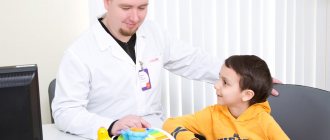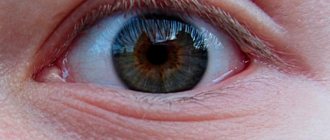Social maladaptation is a complete or partial loss of the subject’s ability to adapt to the conditions of society. That is, this is a violation of a person’s relationship with the environment, which is characterized by the impossibility of his positive social role in certain social conditions corresponding to his potential.
Social maladjustment is characterized by several levels that reflect its depth: latent manifestation of maladjustment phenomena, maladaptive “perturbations,” destruction of previously formed adaptive mechanisms and connections, entrenched maladjustment.
Socio-psychological maladjustment
Adaptation literally means adaptation. This is one of the most significant concepts in biology. Widely used in concepts that treat the relationship of individuals with their environment as processes of homeostatic balancing. It is considered from the point of view of its two directions: adaptation of the individual to the new external environment and adaptation as the formation of new personality qualities on this basis.
There are two degrees of subject adaptation: disadaptation or deep adaptation.
Socio-psychological adaptation consists in the interaction of the social environment and the individual, leading to an ideal balance between the values and goals of the group in general and the individual in particular. In the course of such adaptation, the needs and aspirations, interests of the individual are realized, his individuality is discovered and formed, the individual enters a socially new environment. The result of such adaptation is the formation of professional and social qualities of communications, activities and behavioral reactions accepted in a particular society.
If we consider the adaptive processes of a subject from the perspective of the socio-psychological process of inclusion in activity, then the main points of activity should be the fixation of interest in it, establishing contacts with individuals who surround, satisfaction with such relationships, inclusion in social life.
The concept of social maladaptation of a person means a breakdown in the processes of interaction between a subject and the environment, which are aimed at maintaining a balance within the body, between the body and the environment. This term appeared relatively recently in psychology and psychiatry. The use of the concept of “maladaptation” is quite contradictory and ambiguous, which can be traced mainly in assessing the place and role of maladaptive states in relation to such categories as “norm” or “pathology”, since the parameters of “norm” and “pathology” in psychology are still little developed.
Social maladaptation of an individual is a rather versatile phenomenon, which is based on certain factors of social maladjustment that complicate the social adaptation of an individual.
Factors of social maladjustment:
- relative cultural and social deprivation (deprivation of necessary goods or vital needs);
- psychological and pedagogical neglect;
- hyperstimulation with new (in content) social incentives;
- insufficient preparedness for self-regulation processes;
- loss of already formed forms of mentoring;
- loss of the usual team;
- low degree of psychological readiness to master the profession;
- breaking dynamic stereotypes;
- cognitive dissonance, which was caused due to a discrepancy between judgments about life and the situation in reality;
- character accentuations;
- psychopathic personality formation.
Thus, speaking about the problems of socio-psychological maladjustment, we mean a change in the internal and external circumstances of socialization. Those. social maladaptation of a person is a relatively short-term situational state, which is a consequence of the influence of new, unusual irritating factors of the changed environment and signals an imbalance between the demands of the environment and mental activity. It can be defined as a difficulty complicated by any adaptive factors to transforming conditions, which is expressed in inadequate reactions and behavior of the subject. It is the most important process of socialization of an individual.
Causes of social maladjustment
Social maladjustment of the individual is not a congenital process and never occurs spontaneously or unexpectedly. Its formation is preceded by a whole stage-by-stage complex of negative personality developments. There are also 5 significant reasons that influence the occurrence of maladaptive disorders. Such reasons include: social, biological, psychological, age, socio-economic.
Today, most scientists consider social causes to be the primary source of behavioral deviations. As a result of improper family upbringing and disruption of interpersonal communication, the so-called deformation of the processes of accumulating social experience occurs. This deformation often occurs in adolescence and childhood due to erroneous upbringing, poor relationships with parents, lack of mutual understanding, and mental trauma in childhood.
Biological causes include congenital pathology or brain injury, which affects the emotional and volitional sphere of children. Children with pathology or previous trauma are characterized by increased fatigue, difficulties in communication processes, irritability, inability to perform long-term and regular exercise, and inability to exercise volitional efforts. If such a child grows up in a dysfunctional family, this only strengthens the tendency towards deviant behavior.
Psychological causes of occurrence are determined by the peculiarities of the nervous system, accentuations of character, which, under unfavorable circumstances of upbringing, form abnormal character traits and pathologies in behavior (impulsivity, high excitability, imbalance, unrestraint, excessive activity, etc.)
Age-related reasons are the lability and excitability characteristic of a teenager, accelerating the formation of hedonism, the desire for idleness and carelessness.
Socio-economic reasons include excessive commercialization of society, low family income, and criminalization of society.
Social maladaptation of children
The significance of the problems of social maladaptation of children is determined by the current situation in society. The current situation that has developed in society should be considered critical. Recent studies show a sharp increase among children in such negative manifestations as pedagogical neglect, lack of desire to learn, mental retardation, fatigue, bad mood, exhaustion, excessive activity and mobility, lack of focus in mental activity, problems with concentration, early drug addiction and alcoholism.
It is obvious that the formation of the listed manifestations is directly influenced by biological and social circumstances, which are closely interconnected and determined, first of all, by the transforming living conditions of children and adults.
The problems of society directly affect the family in general and children in particular. Based on the research conducted, we can conclude that today 10% of children are characterized by various developmental disorders. Most children from infancy to adolescence have some kind of illness.
The social adaptation of an adult young person is influenced by the conditions of his formation in childhood and adolescence, his socialization in the social environment of children. Therefore, a significant problem of social and school maladaptation of the child arises. Its main task is prevention - prevention, and correction, i.e. methods aimed at correction.
A maladjusted child is a child who differs from his peers due to problems with adaptation in the living environment, which affect his development, socialization processes, and ability to find solutions to problems that are natural for his age.
In principle, most children quite quickly and easily, without any particular difficulties, overcome the states of maladaptation that they encounter in the process of life.
The main reasons for violations in the social adaptation of children and their conflict may be personality or mental characteristics, such as:
- lack of basic communication skills;
- inadequacy in assessing oneself in communication processes;
- inflated demands on the people who surround them. This manifests itself especially acutely in cases where the child is intellectually developed and is characterized by mental development above average in the group;
- emotional instability;
- the predominance of attitudes that impede communication processes. For example, humiliating the interlocutor, demonstrating one’s superiority, which turns communication into a competitive process;
- fear of communication and anxiety;
- isolation.
Depending on the reasons for the occurrence of violations in social maladaptation, the child can either passively submit to being pushed out of his circle by peers, or he himself can leave embittered and with a desire to take revenge on the team.
The lack of communication skills is a fairly significant barrier to children's interpersonal communication. Skills can be developed through behavioral training.
Social maladaptation can often manifest itself in a child’s aggression. Signs of social maladjustment: low self-esteem along with inflated demands on peers and adults, lack of desire to communicate and fear of communication, imbalance manifested in sudden changes in mood, demonstration of emotions “in public,” isolation.
Maladjustment is quite dangerous for children, as it can lead to the following negative consequences: personal deformations, delayed physical and mental development, possible brain dysfunction, typical nervous system disorders (depression, lethargy or excitability, aggressiveness), loneliness or self-alienation, relationship problems with peers and other people, to suppression of the instinct of self-preservation, suicide.
Prevention of maladaptive states in children and adolescents in secondary schools
The article examines the relevance of the problem of school maladjustment in children and adolescents, and analyzes the nature of the occurrence and characteristic manifestations of maladjustment in childhood and adolescence. The main directions of pedagogical work on the prevention of maladaptive states in secondary school students are proposed.
Key words: school maladjustment, social adaptation, prevention of maladjustment.
The reform of political and socio-economic life in Kazakhstan, which began in the early 90s, led not only to progressive structural changes in the country, but also to the aggravation of various social problems caused by the acceleration of the rhythm of life in modern society. One of these social problems includes problems associated with the emergence of behavioral deviations in today's children and adolescents and the presence of negative mental states, which are based on maladaptive processes. School maladjustment, being part of social maladjustment, is currently a fairly common phenomenon among children and adolescents in our society, which can negatively affect their development as a whole, since social adaptation is an integral indicator of a person’s condition, reflecting his ability to perform certain biosocial tasks. functions. Such functions include a person’s adequate perception of the surrounding reality and himself, an adequate system of relationships with people around him, the ability to do socially useful work, learning, to organize his own leisure and recreation, variability of behavior in accordance with the role expectations of other people [1].
The term “maladaptation” is interpreted as a socio-psychological and socio-pedagogical phenomenon of a child’s failure in learning, associated with a subjectively insoluble conflict for him between the requirements of the educational environment and immediate environment and his psychophysical capabilities and abilities. A child’s failure in educational activities and problems in relationships with personally significant people have a negative impact on the socio-psychological well-being of his entire personal development [2].
When organizing preventive work for maladaptive states in children and adolescents in an educational institution, it should be taken into account that the main factors in the occurrence of maladaptive states include: learning difficulties, family dysfunctions, neuropsychiatric diseases, behavioral deviations, and the imbalance of the modern educational environment. In this regard, the issue of not only studying the nature of the occurrence and characteristic manifestations of social maladjustment, but also determining effective ways and means of its prevention in children's and adolescents' environment of educational institutions becomes particularly relevant. The main idea of prevention is to eliminate social preconditions that contribute to the formation of maladaptive states and take timely measures to preserve the mental health of schoolchildren through the implementation of special psychological and pedagogical work.
The educational process should include psychological and pedagogical support aimed at preventing maladaptive states of students: overwork, physical inactivity, distress, etc.
Adaptation is the process of students actively mastering new learning conditions in order to adapt them to their individual needs and capabilities. The state of social maladaptation is characterized by problems in the social and personal development of the child, which negatively affect the nature of interpersonal relationships with family, teachers and peers. At the same time, social maladjustment develops step by step in two spheres - the activity sphere and the sphere of relationships [3].
Thus, under unfavorable social and psychological-pedagogical conditions, the formation of maladjustment in children and adolescents in educational activities includes five interrelated stages: primary difficulties in learning; knowledge gaps; delay in mastering the program in one or more subjects; partial or total academic failure; refusal of educational activities, i.e. failure to attend training sessions.
Maladjustment in children and adolescents also manifests itself in difficulties caused by the need to assimilate various social roles, curricula, norms and requirements of social institutions such as family and school.
A systematic lack of success in educational activities and increasing tension in relationships with loved ones negatively affect the psychological well-being of the child as a whole. In situations of constant failures in educational activities, it ceases to be significant for the child, so he begins to look for the type of activity in which he would be more successful and could reveal his personal potential (leisure activities, sports, informal teenage groups, etc.). d.) [4].
In the structure of maladjustment, the following main components can be distinguished: cognitive, emotional-personal, behavioral (Table 1).
Table 1
The structure of childhood and adolescent maladjustment
| Components of maladjustment | Content characteristics |
| Cognitive | difficulties in educational activities, unformed or low level of cognitive processes, low performance in certain academic subjects |
| Emotional-personal | negative subjective attitude towards individual subjects and teaching in general, teachers |
| Behavioral | violation of academic discipline, behavior in the sphere of interaction with teachers and peers |
The main reasons for the formation of maladaptive states in children and adolescents include:
psychophysiological and cognitive factors: individual temperamental properties, increased anxiety, low level of voluntariness, attention, thinking, memory and behavior, psychological and functional unpreparedness for the conditions and requirements of the educational process, mental and physical health disorders.
social: a change in the child’s role position, the child’s assimilation of a system of new school requirements, a variety of educational requirements, an increase in the level of complexity of the training program, an increase in intellectual and psycho-emotional load, a change in the parental position in relation to the child, violation of the regime, etc. [5].
In psychological and pedagogical work to prevent maladaptive states in children and adolescents, two main strategic goals must be realized:
1) facilitating the adaptation of all children, without exception, to school;
2) prevention of maladaptive states in students.
Work on the prevention of maladjustment in children and adolescents should be of a purely individual nature, based on a comprehensive analysis of the causes of maladaptation of a particular student, which may be associated with the characteristics of both the psyche of the student himself and the conditions of the surrounding socio-educational environment [6].
There is a certain algorithm for preventing student maladaptation, which includes the following main stages (Figure 1) [7]:
Rice. 1. Algorithm for preventing student maladjustment
When carrying out diagnostic work, the time frame should be taken into account, since with children of primary school age, diagnostics cannot be carried out for more than 30–40 minutes; with adolescents, diagnostics can be carried out in 2 stages, each lasting no more than one hour. Psychological diagnostics of the characteristics of the behavioral and personal profile of students allows us to identify such characteristic aspects as: the level of adaptation of the student to the conditions of the school; range of current problems in the educational activities of schoolchildren; the student's attitude towards himself; emotional and behavioral problems of the child; features of the student’s interpersonal relationships with peers, i.e., determination of his social status.
The obtained indicators make it possible to determine the most effective ways of correctional work within the framework of the educational process, to specify the tasks of preventing the formation of maladaptive states (overwork, physical inactivity, distress) in children and adolescents, as well as to identify a “risk group” for in-depth diagnostic and enhanced pedagogical correction -developmental work, the directions of which are presented below (Table 2).
It should be taken into account that, along with the described manifestations of school maladjustment, there are also its hidden forms, when, with sufficiently good academic performance and discipline, the child experiences constant internal anxiety and fear of school or a specific teacher, he has no desire to go to school, there are difficulties in communication, inadequate (usually low) self-esteem. In this case, it is necessary to develop a slightly different correctional and pedagogical program to eliminate such maladaptive states, based on an analysis of the individual reasons for their occurrence.
table 2
Direction of pedagogical work with children with signs of school maladjustment
| Variants of manifestation of maladjustment | Recommendations for teachers |
| They cannot independently convey their thoughts to communication partners and formulate answers to questions asked of them, as well as independently formulate questions to their interlocutor. During disputes that arise, they behave incorrectly. They are not able to defend their own position with reason and change it, because they do not realize the need for this. When interacting with the class, they do not obey the general decision of the group. They cannot build a communication process taking into account the status of the interlocutor and the characteristics of a particular communication situation. | It is necessary to teach adequate methods of participation in a discussion, to develop in children the ability to competently and correctly justify their position in a dispute, to see the common goal of the group and act in accordance with it, to maintain social distance during communication with adults (parents, teachers, etc.) and peers . |
| When perceiving educational information, they cannot act independently. Information presented in writing causes particular difficulties. They experience great difficulty in identifying what is new and important when analyzing educational information. The pace of intellectual activity and its effectiveness are noticeably reduced. Mastering the school educational program is significantly difficult. | A step-by-step (dosed) presentation of educational information with constant step-by-step monitoring of its assimilation is necessary. When processing information intellectually, additional teaching, organizing and stimulating assistance from a teacher is necessary. It is necessary to develop the level of logical thinking. |
| It is difficult to understand the educational task as the goal of the activity. They start work without a clear plan of action. No clarifying questions are asked, although additional clarification is needed. They act not systematically, but impulsively and chaotically. If the work algorithm is proposed by the teacher, during the work they grossly violate it without noticing it. Having completed a task, they are often satisfied with the erroneous result, but when checking the result, they do not see any mistakes made. They are not able to seek the necessary additional help from the teacher, and even if such help is provided, they do not know how to use it. | It is necessary to teach the ability to set a goal for an activity and develop a plan to achieve it. Upon completion of the work, children should be encouraged to compare their own results with the sample, find and correct mistakes, and on this basis give a self-assessment of the work performed. Children should be shown where they can get additional help and how to use it correctly. |
Thus, the main directions of preventive and correctional-developmental work with children in the aspect of interpersonal relationships with peers include:
development of self-knowledge of children and adolescents in various social situations, determination of their position and methods of adequate behavior in them;
training in the skills of analyzing various communication situations;
training in emotional self-control skills in communication;
creating conditions for children and adolescents to turn to their own communication experience;
teaching children and adolescents the skills of effective interaction in conflict.
Only such an integrated approach ensures the necessary effectiveness of psychological and pedagogical work to prevent maladaptive states in children and adolescents and their correction.
Literature:
- Kazanskaya V. G. Teenager: social adaptation. - St. Petersburg: Peter, 2011.
- Ageeva L.G. Socio-psychological disadaptation of modern adolescents and its causes. - Ulyanovsk: 2010.
- Sharapanovskaya E. V. Socio-psychological disadaptation of children and adolescents. - M.: Sfera, 2005.
- Galushina E., Komarova O. Game for teenagers “What is the meaning of life” // School psychologist, 2005, No. 5.
- Korchuganova I.P. Professional development and support for teachers working with “at-risk” children: Methodological manual. - St. Petersburg, 2006.
- Krylova T. A., Strukova M. L. Social and pedagogical technologies in working with children and families at risk. - M.: Research Institute "School Technologies", 2010, - pp. 26–52.
- Cheprakova E. A. Development of correctional and developmental programs. — // Handbook of educational psychologist. School. — 2012, No. 4.
Social maladjustment of adolescents
The process of socialization is the introduction of a child into society. This process is characterized by complexity, multifactoriality, multidirectionality and poor forecasting in the end. The socialization process can last a lifetime. One should not deny the impact of the innate qualities of the body on personal properties. After all, the formation of personality occurs only as a person is included in the surrounding society.
One of the prerequisites for the formation of personality is interaction with other subjects who transfer accumulated knowledge and life experience. This is accomplished not through simple mastery of social relations, but as a result of the complex interaction of social (external) and psychophysical (internal) developmental inclinations. And it represents the cohesion of socially typical traits and individually significant qualities. It follows from this that personality is socially conditioned and develops only in the process of life, in a change in the child’s attitude to the surrounding reality. From this we can conclude that the degree of socialization of an individual is determined by many components, which, when combined, form the overall structure of the influence of society on an individual. And the presence of certain defects in each of these components leads to the formation in the individual of social and psychological qualities that can lead the individual in specific circumstances to conflict situations with society.
Under the influence of socio-psychological conditions of the external environment and in the presence of internal factors, the child develops maladjustment, manifested in the form of abnormal - deviant behavior. Social maladaptation of adolescents arises from violations of normal socialization and is characterized by deformation of the referent and value orientations of adolescents, a decrease in the significance of the referent character and alienation, first of all, from the influence of teachers at school.
Depending on the degree of alienation and the depth of the resulting deformations of value and reference orientations, two phases of social maladjustment are distinguished. The first phase consists of pedagogical neglect and is characterized by alienation from school and loss of referent significance at school while maintaining a fairly high reference significance in the family. The second phase is more dangerous and is characterized by alienation from both school and family. The connection with the main institutions of socialization is lost. The assimilation of distorted value-normative ideas occurs and the first criminal experience appears in youth groups. The result of this will be not only a lag in learning, poor performance, but also increasing psychological discomfort that adolescents experience at school. This pushes adolescents to search for a new, non-school communication environment, another reference group of peers, which subsequently begins to play a leading role in the process of socialization of adolescents.
Factors of social maladaptation of adolescents: exclusion from the situation of personal growth and development, neglect of the personal desire for self-realization, self-affirmation in a socially acceptable way. The consequence of maladaptation will be psychological isolation in the communicative sphere with a loss of the sense of belonging to its inherent culture, a transition to attitudes and values that dominate the microenvironment.
Unmet needs can lead to increased social activity. And it, in turn, can result in social creativity and this will be a positive deviation, or it will manifest itself in antisocial activity. If she does not find a way out, she may seek a way out by becoming addicted to alcohol or drugs. The most unfavorable development is a suicide attempt.
The current social and economic instability, the critical state of the health care and education systems not only does not contribute to the comfortable socialization of the individual, but also aggravates the processes of maladaptation of adolescents associated with problems in family upbringing, which lead to even greater anomalies in the behavioral reactions of adolescents. Therefore, the process of socialization of adolescents is increasingly becoming negative. The situation is aggravated by the spiritual pressure of the criminal world and their values, rather than civil institutions. The destruction of the main institutions of socialization leads to an increase in crime among minors.
Also, the sharp increase in the number of maladjusted adolescents is influenced by the following social contradictions: indifference to smoking in secondary schools, the lack of an effective method of combating truancy, which today has practically become the norm of school behavior, along with the ongoing reduction in educational and preventive work in government organizations and institutions that deal with leisure and raising children; replenishment of juvenile gangs of criminals due to teenagers who have dropped out of school and are lagging behind in their studies, along with a decrease in social relationships between families and teachers. This makes it easier for teenagers to establish contacts with juvenile criminal groups, where illegal and deviant behavior develops freely and is welcomed; crisis phenomena in society that contribute to the growth of anomalies in the socialization of adolescents, along with a weakening of the educational influence on adolescents of public groups that should exercise education and public control over the actions of minors.
Consequently, the increase in maladjustment, deviant behavior, and teenage crime is the result of the global social alienation of children and youth from society. And this is a consequence of a violation of the immediate processes of socialization, which have become uncontrollable and spontaneous in nature.
Signs of social maladaptation of adolescents associated with such an institution of socialization as school:
The first sign is poor academic performance in the school curriculum, which includes: chronic underachievement, repeating a year, insufficient and fragmentary acquired general educational information, i.e. lack of a system of knowledge and skills in studies.
The next sign is systematic violations of an emotionally charged personal attitude towards learning in general and some subjects in particular, towards teachers, and life prospects related to learning. Behavior can be indifferent-indifferent, passive-negative, demonstrative-dismissive, etc.
The third sign is regularly recurring anomalies of behavior during school learning and in the school environment. For example, passive-refusal behavior, lack of contact, complete refusal of school, persistent behavior with violation of discipline, characterized by oppositional defiant actions and including active and demonstrative opposition of one’s personality to other students and teachers, disregard for the rules adopted at school, vandalism at school .
The problem of prevention and correction of school maladaptation of students with mild central nervous system pathologies
School maladaptation is a set of signs indicating maladaptation of the child’s socio-psychophysiological status to the demands of the school situation, coping with which for various reasons becomes difficult and, in extreme cases, impossible. In fact, school maladjustment is a term that defines any difficulties in the learning process.
Primary, outward signs of school dislike include learning difficulties and behavior problems. One of the reasons for these manifestations is the presence of mild forms of pathologies of the central nervous system. These include cervical spine pathology and minimal cerebral dysfunction.
The relevance of studying the characteristics of school adaptation of students with mental retardation and MMD is determined by the growing number of such children. According to a number of studies, up to 70 students study there. According to a study conducted in secondary schools in Moscow, among students with school maladjustment, MMD was identified in more than half of the students (52.2%). Moreover, the incidence of MMD was 2.3 times higher in boys, and motor hyperactivity syndrome was 4.5 times higher than in girls.
Features of children with this pathology include rapid fatigue, difficulties in the formation of voluntary attention (instability, distractibility, difficulty concentrating, slow speed of switching attention), motor hyperactivity, reduced ability to self-government and independence in any activity, reduced working memory, attention, and thinking. Usually these features appear in preschool age, but for a number of reasons they do not become the object of attention of teachers and psychologists. As a rule, parents and teachers pay attention to the child’s problems only at the beginning of the school period.
School, with its daily intense intellectual load, requires the child to realize all those functions that are impaired. The first serious problem for a child with ASD, MMD is the length of the lesson. The maximum duration of such a child's performance is 1 5 minutes. Then the child is unable to control his mental activity. The child’s brain needs rest, so the child involuntarily switches off from mental activity. Omission of educational information, which is summarized for all periods during the lesson, leads to the child learning the material incompletely or with significant distortions, sometimes completely losing the essence, and in some cases the information mastered by the child becomes unrecognizable.
In the future, the child uses incorrect information, which leads to difficulties in mastering subsequent material. The child develops significant gaps in knowledge. Since the attention of children with ASD, MMD is extremely unstable, and distractibility is high, working in a class with other 20 or even 30 children is already very difficult for the child. They are distracted by any movements and sounds.
Such children do better on tests or tests if the teacher conducts them alone with the child. Parents notice that the child copes with tasks at home that he could not cope with in the classroom. This is explained by the fact that the child feels more comfortable at home: it is quiet, there are no time limits for completing tasks, in a familiar environment the child feels calmer and more confident. Parents help and guide their child's work.
The success of a child’s education largely depends on his ability to establish conflict-free relationships with peers and control his behavior. Many modern educational technologies require children to work in pairs or fours during the lesson, which requires the ability to organize interaction with peers. This is where difficulties may arise for a child with mental retardation, as he is easily distracted from the learning task and is susceptible to the influence of other children.
Since the motivation to learn in children with ASD, MMD is weak, they usually adapt to play-oriented children. Children with ASD and MMD willingly participate in games that their classmates can offer them. In addition, difficulties in managing oneself often manifest themselves in intemperance and harshness towards classmates.
Motor hyperactivity, which occurs in many children with ASD, is a serious obstacle to learning not only for the child himself, but also for other children, and leads to a refusal to work together with such a child. Increased emotional excitability and motor hyperactivity, characteristic of many children in this group, make the usual methods of organizing extracurricular activities unsuitable. The search for new methods of organizing extracurricular work with children in classes where the number of students with ASPS and MMD exceeds 40% is becoming especially relevant.
It should be noted that, despite the fact that the above problems of the child significantly complicate his cognitive activity, psychologists and teachers do not always understand the connection between the child’s health and his problems in educational activities.
A questionnaire survey among psychologists in educational institutions showed that most of them do not have a clear understanding of the nature of disorders such as PCOS and MMD. Most often, the awareness of psychologists and teachers is manifested in the awareness of the prevalence of such pathologies.
Correction of social maladjustment
In childhood, the main directions for correcting social maladjustment of the individual should be: development of communication skills, harmonization of interpersonal communication in the family and in peer groups, adjustment of certain personality traits that impede communication, or transformation of the manifestations of traits in such a way that in the future they cannot negatively affect communication. sphere, adjusting children’s self-esteem to bring it closer to normal.
Currently, trainings that are especially popular in the correction of social maladaptation are: psychotechnical games aimed at developing various mental functions that are associated with transformations in consciousness, and role-playing socio-psychological training.
This training is aimed at resolving the internal contradictions of the subject in the conditions of developing certain skills in performing specific social functions (formation and consolidation of the necessary social and cultural norms). The training takes place in the form of a game.
Main functions of the training:
- training, which consists in the development of skills and abilities necessary for learning, such as: attention, memory, reproduction of received information, foreign speech skills;
- entertaining, serves to create a more favorable atmosphere during the training, which transforms training into an exciting and entertaining adventure;
- communicative, which consists in establishing emotional contacts;
- relaxation – aimed at relieving emotional stress;
- psychotechnical, characterized by the formation of skills to prepare one’s own physiological state in order to obtain more information;
- preventive, aimed at preventing unwanted behavior;
- developmental, characterized by the development of personality from different sides, the development of character traits through playing out all possible situations.
Social-psychological training consists of a specific psychological impact, which is based on active methods of working in groups. It is characterized by the intensity of the individual’s preparation for a more fulfilling and active life. The essence of the training is specially organized training for the purpose of self-improvement of the individual’s personality. It is aimed at solving such problems as: mastering social and pedagogical knowledge, developing the ability to know oneself and others, increasing ideas about one’s importance, and developing a variety of abilities, skills, and abilities.
Training is a whole complex of sequential classes with one group. Tasks and exercises are selected individually for each group.
Difficulties
A certain part of school psychologists are familiar with the difficulties that children with cerebral palsy and minimal brain development in cognitive activity may experience, but do not know how to organize work to effectively help children and teachers, and do not know how to diagnose the presence of child developmental disorders. Most respondents do not know about the characteristics of the personal development of children with PSOP and MMD. Literature devoted to the problems of children with PSOP and MMD is not widespread and is mainly devoted to the characteristics of the cognitive development of these children.
Meanwhile, the personality development of such children is usually delayed. Children are infantile, prone to irrational behavior strategies, not independent, easily susceptible to the influence of others and prone to lies. They do not feel responsible for their own actions and deeds; many of them are characterized by the motivation to avoid failures, the motivation to achieve is not expressed, there is no motivation to learn, there are no interests or serious hobbies. Limited opportunities for self-organization lead to the fact that the child does not know how to structure his free time.
It is easy to see that it is precisely such personal characteristics that largely contribute to a child’s tendency to addictive behavior. This tendency is especially evident in adolescence. At this age, a child with the above pathologies most often comes with a lot of problems: serious gaps in basic knowledge, low social status, conflictual relationships with some classmates (in some cases with the majority), tense relationships with teachers.
Emotional immaturity forces children to choose the simplest ways to solve problems: leaving school, lying, searching for a reference group outside of school. Many of these children join the ranks of those who thrive in deviant behavior. They go from learning difficulties, truancy and lying to delinquency, crime, drugs. In this regard, the relevance of organizing psychoprophylactic and psychocorrectional work with students with mental retardation and MMD is obvious.
It is noteworthy that psychologists in many schools do not recognize the connection between the history of a child with PPCNSL, MMD and disorders in his personal development. Thus, when asked whether there were children with PCPD or MMD in their school, many psychologists could only answer that they had heard about the presence of such diagnoses in students. At the same time, they could not name the number of students with this pathology and did not remember which of them was which. Psychologists explained that they do not work with such students because they are busy with other work.
Thus, while paying attention to children, trying to solve the problems of school maladjustment, the school psychologist often fails to eliminate or correct the primary error.
Organizing effective psychological work is impossible without determining the root cause of school maladjustment in a child of any age, without a clear definition of cause-and-effect relationships. Due to the fact that the main cause of school maladjustment in its various manifestations is a violation of the child’s health, an integrated approach to organizing work with a child with ASD and MMD is necessary.
Working with a child is especially complex as it involves social, medical, psychological and educational aspects. The implementation of a comprehensive program of psychological rehabilitation of children with ASD, MMD identified a number of the most acute problems, including:
- low awareness of doctors, psychologists, teachers and parents about the nature of the problem and the psychological consequences of the child’s health characteristics.
- low awareness of psychologists, teachers, and parents about the possibility of receiving qualified medical and psychological assistance.
- lack of pedagogical technologies for raising and training children with manifestations of mild central nervous system pathologies.
- the widening gap between the growing demands on a child's education and the deteriorating health of children.
- low awareness of medical workers, school psychologists and teachers about both the problems and successes of each professional group in working with children with PSPD and MMD.
- psychological and organizational unpreparedness of medical institutions and school psychologists to coordinate the rehabilitation of children with autism, MMD.
- the existing negative attitude of the population towards seeking help from psychotherapists and psychiatrists.
- passive position of parents in relation to the organization of treatment of children, inconsistency, irregularity and, as a consequence, ineffective treatment of children.









